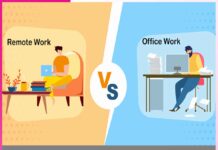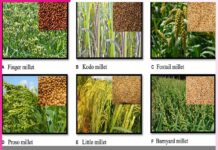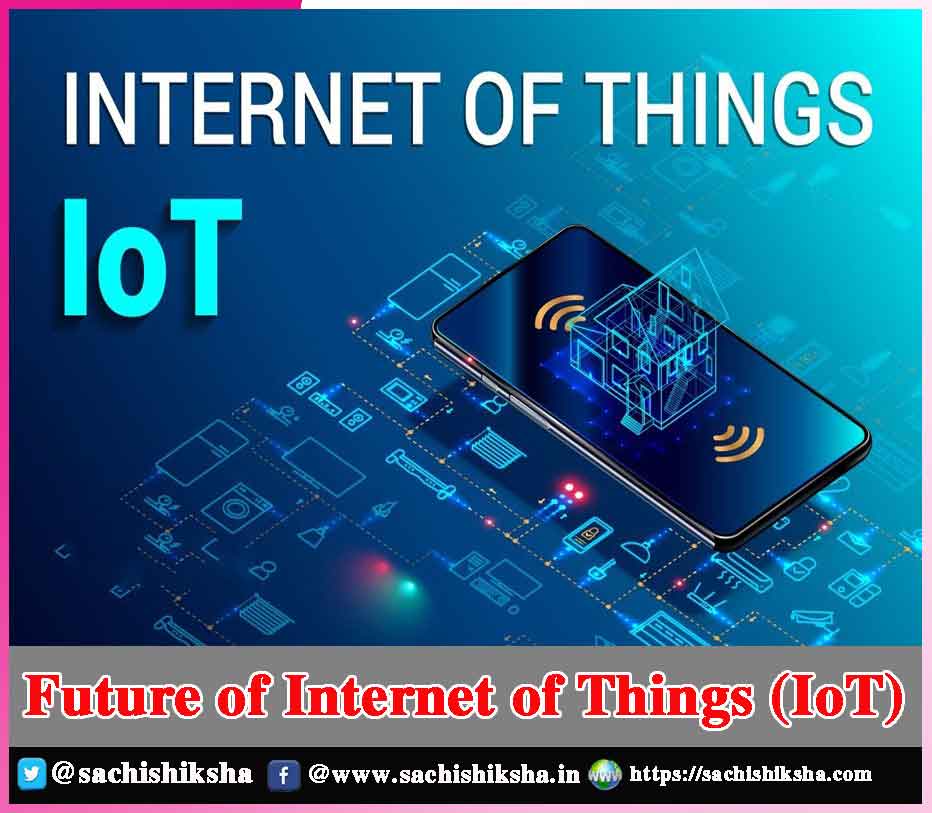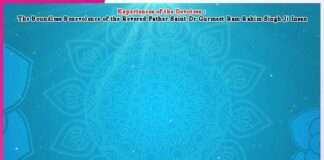Future of Internet of Things (IoT)
Introduction: The Internet of Things (IoT) is a collection of interrelated devices that includes sensors, telecommunications gadgets, cameras, and other gadgets. They are programmed in a manner that IoT enables functionality for the linked devices. Smart televisions, refrigerators, and air conditioning units are a few examples of typical IoT gadgets that we encounter and utilize in our daily lives.
To operate these gadgets, we only need to create the program using our smartphone. In addition, we employ a variety of portable IoT devices, such as smart watches and wrist bands that display our pulse rate, heart rate, and distance covered. All of this is made feasible by intelligently combining devices and technologies to make an IoT application program.
Also Read:
- Online Education – A Challenge
- Free Education in Germany
- Online Learning- Pros and Cons
- Cybersecurity
- Digital Etiquette
- Bright Future in Digital Marketing
Table of Contents
Major Usages of IoT:
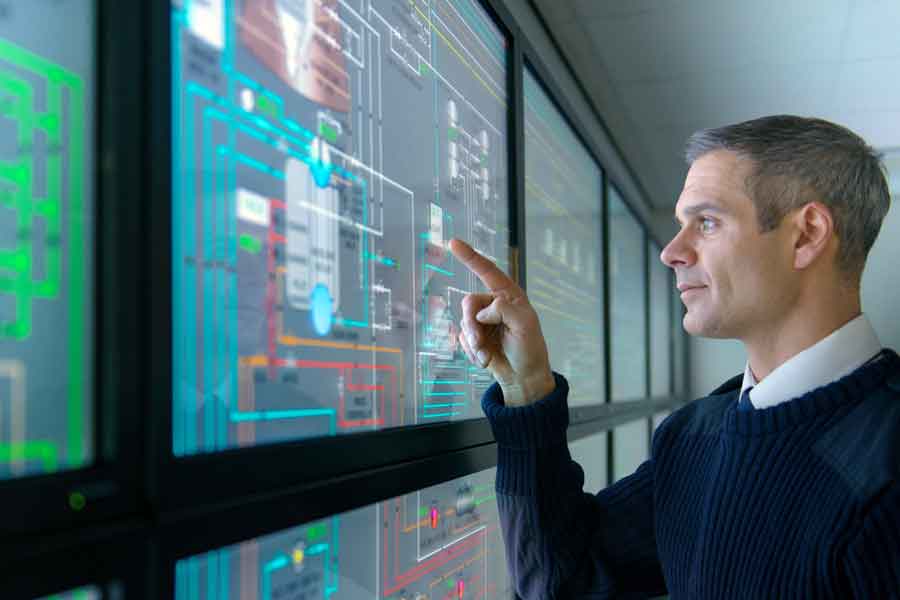
Controlling IoT Enabled Household Appliances:
Haven’t you ever gone to the store and forgotten to shut off your air conditioner, computer, or light and felt so helpless because you couldn’t come back home to switch that off? Inthat case, IoT enters the picture. It might inform you of important duties that you frequently overlook. One may also control your IoT-enabled household appliances regardless of where you are in the world by using the mobile phone app.
NFC Ring:
The NFC (Near Field Communication) intelligent ring is another intriguing IoT item. These are rings made of internet connectivity, NFC chips, and devices that allow you to share information. One can use NFC rings to pay your bills, unlock their car gate by scanning it, and receive mobile alerts. Isn’t it a fantastic innovation that allows you to carry out all tasks by simply scanning the ring? This entire process is facilitated by connecting IoT devices to Internet servers, which allows for knowledge to be shared and transferred. This technique eliminates human labour and eliminates a considerable amount of time.
How IoT Works?
The Internet of Things is a collection of smart devices, neighborhood networks, the Internet, cloud services, and user applications. It is a local network that connects an IoT device. The data is subsequently transmitted to the cloud servers over the Internet. In addition, the cloud servers deliver the information or data from the end-user application to the IoT system. This data transmission is a two-way interaction that aids in the operation of the IoT system.
World-leading Innovation:
The Internet of Things has developed as a world-leading innovation. It has become increasingly common in a short period of time. Furthermore, advances in machine learning and artificial intelligence have simplified the management of IoT devices. AI and ML programmes are essentially integrated with IoT devices to provide optimal functionality.
IoT in Health Care Industry:
24/7 Diagnosis Facility:
As a result, IoT has broadened its range of applications across a variety of industries. The Internet of Things has proven to be one of the most effective technologies for the healthcare industry. It contributes to the provision of highly developed medical facilities to patients, doctors, and scientists. Smart diagnostics, wearable gadgets for monitoring health, patient monitoring, and other services are among those available. In addition, IoT gadgets have relieved undue stress on the healthcare system.
Healthcare devices can deliver patients’ wellness information directly to doctors over a secure system. This enables clinicians to evaluate individuals living in faraway regions. There is a reduction in errors in patient diagnosis. thanks to IoT devices. As a result, patients can receive appropriate medical care promptly. Furthermore, when compared to traditional diagnosis, 24/7 diagnosis via devices provides a more accurate picture of patients’ health. Manual diagnosis takes time and needs the use of several types of expensive technology, in addition to additional hospital expenditures. As a result, the entire price of the treatment rises.
Ensures the Availability of Doctors:
In addition, because patients can be examined from their separate places, hospital charges and congestion can be decreased. The Internet of Things addresses one of the healthcare industry’s fundamental issues: the accessibility of doctors, particularly experts, in isolated areas. The care of patients in the dearth of doctors is now possible due to IoT devices. Patients are only required to wear the gadget. The gadget will then communicate all actual information about the patients’ health to the appropriate specialists for analysis. In this approach, the Internet of Things is assisting the healthcare industry in providing proper treatment to the needed.
Use of IoT in Agriculture:
Food is one of the three basic human necessities. We cultivate to meet the demand for food. Moreover, as the world population continues to rise, the agriculture sector is confronted with many difficulties. Variations in conditions and the climate can have a serious influence on the agriculture sector. To address increased food requirements, the sector has utilized technological advances to improve efficiency. Precision agriculture, farming drones, and smart agriculture technologies are all part of it. All of this is developed on the foundation of the Internet of Things application.
Precision Farming:
Information and communication technology (ICT) is a device used in agriculture for precision agriculture. Crop lands are monitored using IoT-enabled sensors. Sensors are used in the technique to measure moisture levels, temperature, and warmth. It also makes water used effectively by employing an automatic irrigation system. Precision farming assists farmers in monitoring their farms and increasing productivity.
Agricultural Drones:
Drones used in farming and agriculture are among the top Internet of Things applications. They are employed to improve agricultural operations. We employ agricultural drones for land preparation, irrigation, pesticide treatment, and field surveillance. It is becoming easier to assess crop health with the use of drones.
Greenhouse Farming:
All of this is made feasible by clever IoT-based technology utilized to manufacture agricultural drones. Farmers employ greenhouse cultivation to increase crop output. Mechanical intervention is used to regulate environmental circumstances that influence crop growth in greenhouse farming. Directly regulating the mechanism for crop development, on the other hand, is less efficient.
The rise of IoT and technological breakthroughs has resulted in the development of IoT-based greenhouses, which are made up of numerous gadgets like sensors, temperature controllers, and so on. These IoT devices aid in monitoring multiple ecological variables in accordance with plants growth. Because all monitors and gadgets communicate via Internet servers, they provide precise information on environmental conditions.
IoT in Automotive Industry:
The application of IoT in the automotive industry is transforming in the twenty-first century. One of the primary uses has been the development of self-driving automobiles, which has altered the automotive industry’s tendencies. Engineers have created self-driving automobiles in order to decrease discrepancies and guarantee a secure ride. Google, Tesla, Mercedes-Benz, Volvo, Audi, and many other businesses are developing self-driving automobiles around the world.
These self-driving automobiles make use of a wide range of technologies including Machine Learning, Artificial Intelligence, Reinforcement Learning, and Internet of Things. Temperature controllers, smart navigators, remote access, high definition cameras, and rain sensors are some of the IoT gadgets that are widely available from retailers nowadays. IoT-based HD cameras assist in obtaining pictures of the surrounding and transmitting the info to AI-based systems. These technologies evaluate and interpret data from their surroundings in order to adjust the reaction of self-driving cars. There are also IoT-based speed regulators that help mitigate the speed of these vehicles based on congestion and heavy traffic.
Conclusion: India, as a developing economy, has a broad IoT scope. According to Job portals like Naukri.com, the future of Internet of Things (IoT) industry in India is bright, with 117,114 job openings for an IoT Programmer. In the United States, however, the need for an IoT Programmer has increased by more than 300 percent.








